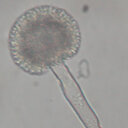Synthesis and Biological Evaluation of Novel Dehydroabietic Acid-Oxazolidinone Hybrids for Antitumor Properties.
Kľúčové slová
Abstrakt
Novel representatives of the important group of biologically-active, dehydroabietic acid-bearing oxazolidinone moiety were synthesized to explore more efficacious and less toxic antitumor agents. Structures of all the newly target molecules were confirmed by IR, ¹H-NMR, 13C-NMR, and HR-MS. The inhibitory activities of these compounds against different human cancer cell lines (MGC-803, CNE-2, SK-OV-3, NCI-H460) and human normal liver cell line LO2 were evaluated and compared with the commercial anticancer drug cisplatin, using standard MTT (methyl thiazolytetrazolium) assay in vitro. The pharmacological screening results revealed that most of the hybrids showed significantly improved antiproliferative activities over dehydroabietic acid and that some displayed better inhibitory activities compared to cisplatin. In particular, compound 4j exhibited promising cytotoxicity with IC50 values ranging from 3.82 to 17.76 µM against all the test cell lines and displayed very weak cytotoxicity (IC50 > 100 µM) on normal cells, showing good selectivity between normal and malignant cells. Furthermore, the action mechanism of the representative compound 4j was preliminarily investigated by Annexin-V/PI dual staining, Hoechst 33258 staining, which indicated that the compound can induce cell apoptosis in MGC-803 cells in a dose-dependent manner and arrest the cell cycle in G1 phase. Therefore, 4j may be further exploited as a novel pharmacophore model for the development of anticancer agents.


